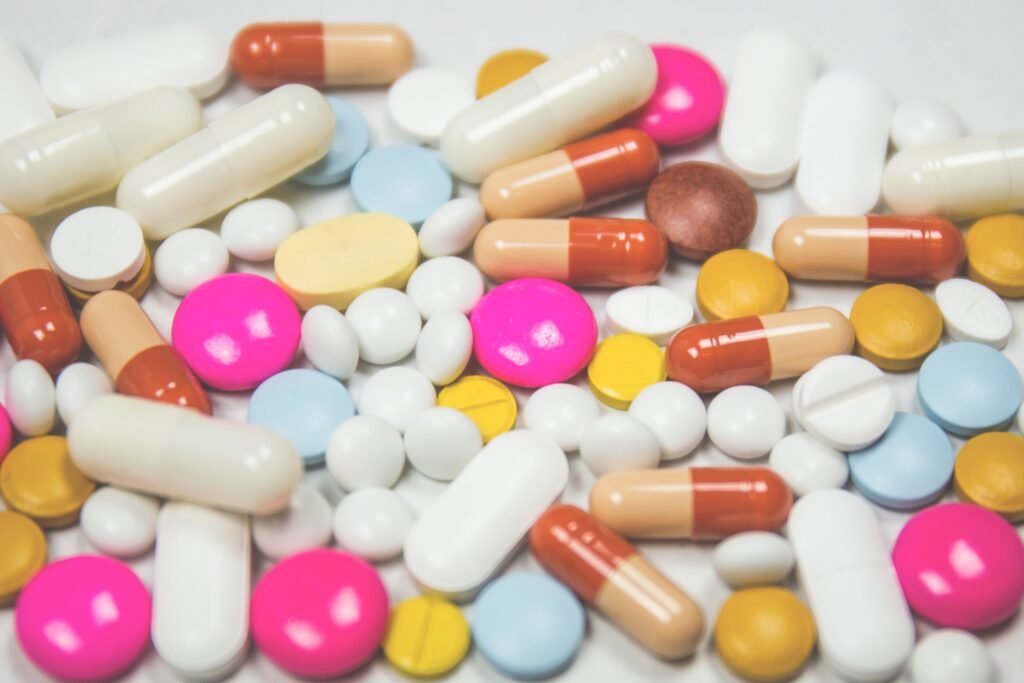In a world where safeguarding personal and medical data has become paramount, it is crucial to understand which specific designation encompasses both personally identifiable information and protected health information. The implications of mishandling this sensitive data can be far-reaching, but fear not! This article will demystify the distinction, shedding light on the overlap between these two important categories, ensuring that you are armed with the knowledge to protect yourself and others.

Read More Information at Health Joy
HIPAA and PHI
HIPAA, which stands for the Health Insurance Portability and Accountability Act, is a vital piece of legislation that protects the privacy and security of individuals’ health information. Under HIPAA, Personally Identifiable Information (PII) is safeguarded, particularly Protected Health Information (PHI). Understanding the definition of PHI, the entities covered by HIPAA, and the examples of PHI is crucial for maintaining compliance and ensuring the protection of sensitive health information.
Definition of PHI
Protected Health Information (PHI) refers to any information related to an individual’s past, present, or future physical or mental health conditions, the provision of healthcare services, or payment for healthcare services. This information must be created, collected, transmitted, or maintained by a Covered Entity or a Business Associate acting on behalf of a Covered Entity. PHI can come in various forms, such as medical records, health insurance information, and more.
Covered Entities
Covered Entities are organizations or individuals that handle PHI and are therefore subject to HIPAA regulations. Examples of Covered Entities include healthcare providers such as doctors, hospitals, clinics, and pharmacies. Additionally, health plans, healthcare clearinghouses, and any business associates that handle PHI on behalf of a Covered Entity are also considered Covered Entities under HIPAA.
Designated Entities under HIPAA
Designated Entities play a crucial role in the protection of PHI under HIPAA. They are organizations or individuals that have been authorized by HIPAA to collect, use, disclose, or dispose of PHI for various purposes. Designated Entities may include healthcare providers, health plans, healthcare clearinghouses, and business associates. These entities must adhere to strict HIPAA regulations to ensure the privacy and security of the PHI they handle.
Examples of PHI
There are numerous examples of PHI that are protected under HIPAA. Medical records, which contain information such as diagnoses, test results, and treatment plans, are considered PHI. Health insurance information, including policy numbers, claims, and coverage details, also falls under PHI. Additionally, demographic information, such as names, addresses, dates of birth, and Social Security numbers, can be considered PHI when associated with health information.
Personal Information Designation
While PHI is a significant component of HIPAA, it is important to understand that HIPAA focuses specifically on health information. In contrast, Personally Identifiable Information (PII) is a broader designation that encompasses a wider range of personal data. Understanding the definition of PII, the common types of PII, and its relationship to privacy laws is essential in comprehending the distinctions between PII and PHI.
Definition of PII
Personally Identifiable Information (PII) refers to any information that can be used to identify an individual. This can include both sensitive and non-sensitive data, such as names, addresses, phone numbers, Social Security numbers, and more. PII can exist in various formats, including physical documents, digital files, and even verbal communication.
Common Types of PII
Common types of PII include names, addresses, phone numbers, Social Security numbers, email addresses, and dates of birth. Financial information, such as bank account numbers and credit card details, can also be considered PII. Furthermore, online identifiers like IP addresses and usernames are increasingly classified as PII due to their potential to identify individuals.
PII and Privacy Laws
Several privacy laws exist to protect PII and ensure individuals’ privacy rights. These laws include the General Data Protection Regulation (GDPR) in Europe and various federal and state legislation in the United States, such as the California Consumer Privacy Act (CCPA) and the Gramm-Leach-Bliley Act (GLBA). These regulations aim to enforce proper handling, storage, and protection of PII and emphasize the importance of transparency and consent in data processing.
PII vs PHI
While PHI falls under the umbrella of PII, it is important to distinguish between the two. PHI specifically relates to health information and is protected under HIPAA, while PII encompasses a broader range of personal data and is subject to various privacy laws. Understanding the distinctions between PII and PHI is crucial when it comes to compliance with the relevant regulations and the implementation of appropriate security measures.

Read More Information at Health Joy
Designation Comparison
Although PII and PHI each have their own definitions and regulations under different laws, there is an overlap between them. Recognizing the similarities and differences between PII and PHI, identifying the distinguishing factors, and addressing regulatory compliance are essential steps in maintaining the privacy and security of personal and health information.
Overlap between PII and PHI
The overlap between PII and PHI occurs when information meets the criteria of both designations. For example, if a dataset contains an individual’s name, address, and medical diagnosis, it would qualify as both PII and PHI. The intersection of these designations highlights the importance of implementing comprehensive data protection measures that encompass both health information and personal identifiers.
Distinguishing Factors
While there is overlap between PII and PHI, there are also distinguishing factors that separate these designations. PII encompasses a broader range of personal data beyond health information, including financial details and online identifiers. On the other hand, PHI specifically pertains to health-related information and is limited to specific covered entities and business associates governed by HIPAA regulations.
Regulatory Compliance
Compliance with privacy regulations is crucial for organizations handling both PII and PHI. Covered Entities and Business Associates need to adhere to HIPAA regulations to ensure the protection of PHI. Simultaneously, organizations handling PII must comply with relevant privacy laws such as the GDPR and CCPA. By establishing robust policies, procedures, and security measures, organizations can navigate the complexities of regulatory compliance and safeguard personal and health information effectively.
Specific Examples
To gain a deeper understanding of PII and PHI, it is helpful to examine specific examples of information that fall under these designations. These examples highlight the sensitive nature of certain personal information and underscore the importance of protecting it from unauthorized access and disclosure.
Medical Records
Medical records contain comprehensive health information, including diagnoses, treatment plans, medications, and laboratory results. This wealth of information is highly sensitive, as it reveals intimate details about an individual’s physical and mental health. Medical records are classified as PHI under HIPAA and require special protection to maintain patient privacy.
Health Insurance Information
Health insurance information, such as policy numbers, claims, and coverage details, is essential for individuals to receive proper healthcare and manage financial aspects related to medical treatment. This information is also considered PHI under HIPAA, as it directly relates to healthcare services and payment. Safeguarding health insurance information is vital to prevent fraudulent activities and protect individuals’ privacy.
Social Security Numbers
Social Security numbers (SSNs) are unique identifiers issued by the U.S. government and are widely used for identification and record-keeping purposes. SSNs are classified as PII and are highly sought after by identity thieves due to their potential for financial and personal harm. Organizations must handle SSNs with utmost care, implementing stringent security measures to prevent unauthorized access and potential identity theft.
Biometric Data
Biometric data encompasses unique physiological or behavioral characteristics, including fingerprints, retinal scans, and voiceprints. This data has gained prominence in authentication and identification processes in various industries. Biometric data is considered sensitive PII since it is personally identifiable and can be used to uniquely identify individuals. Robust security measures must safeguard biometric data to ensure its privacy and prevent unauthorized use.
Personally Identifiable Financial Information
Personally Identifiable Financial Information (PIFI) refers to personal financial data that can be used to identify individuals. This includes bank account numbers, credit card details, income records, and investment information. PIFI is highly sensitive and valuable to cybercriminals seeking to commit financial fraud and identity theft. Safeguarding PIFI is critical for protecting individuals’ financial well-being and preventing unauthorized access to their accounts.

PII Classification
To effectively manage and protect personal information, it is helpful to classify PII into sensitive and non-sensitive categories. This classification aids in implementing appropriate security measures based on the level of sensitivity associated with different types of personal data.
Sensitive PII
Sensitive PII comprises highly personal and confidential information that, if disclosed or compromised, can cause significant harm to individuals. Examples of sensitive PII include Social Security numbers, financial account information, medical records, and biometric data. Organizations must prioritize the protection of sensitive PII and enforce stringent security measures to mitigate risks effectively.
Non-Sensitive PII
Non-sensitive PII refers to personal information that, if exposed or compromised, may not lead to severe harm or identity theft. This category includes information such as names, addresses, phone numbers, and email addresses. While the unauthorized disclosure of non-sensitive PII may not have immediate serious consequences, organizations still have an obligation to protect it and ensure individuals’ privacy.
Protection and Security Measures
To safeguard PII and PHI effectively, organizations must implement robust protection and security measures. Understanding the HIPAA Privacy Rule, best practices for PII security, breach notification requirements, and data encryption is crucial to maintaining compliance and minimizing the risk of unauthorized access and data breaches.
HIPAA Privacy Rule
The HIPAA Privacy Rule establishes national standards for protecting individuals’ medical records and other PHI. It requires Covered Entities and their business associates to implement administrative, physical, and technical safeguards to ensure the confidentiality, integrity, and availability of PHI. These safeguards include access controls, encryption, employee training, and comprehensive privacy policies and procedures.
PII Security Best Practices
Protecting PII requires organizations to adopt proactive security measures. Best practices for PII security include implementing strong access controls with role-based permissions, regularly updating software and systems to patch vulnerabilities, conducting thorough risk assessments, and training employees on secure data handling practices. By adopting these best practices, organizations can minimize the risk of data breaches and unauthorized access to personal information.
Breach Notification Requirements
In the event of a data breach involving PII or PHI, organizations must comply with breach notification requirements. These requirements may vary depending on the applicable laws and jurisdictions. However, common practices include promptly notifying affected individuals, regulatory authorities, and, in some cases, the media. Timely and transparent breach notification ensures that affected individuals can take appropriate measures to protect themselves and helps maintain trust in the organization’s commitment to data security.
Data Encryption
Data encryption is a crucial security measure for protecting both PII and PHI. Encryption ensures that sensitive information remains unreadable to unauthorized individuals, even if it is intercepted or accessed without authorization. By encrypting data at rest, in transit, and during storage, organizations can mitigate the risk of unauthorized access and safeguard personal and health information effectively.
Legal Consequences and Penalties
Failure to comply with the regulations governing PII and PHI can have severe legal consequences. Violations of HIPAA and privacy laws can result in fines, penalties, and damage to an organization’s reputation. Understanding the potential consequences of non-compliance serves as a strong motivator for organizations to invest in proper privacy and security practices.
HIPAA Violations
Violating HIPAA regulations can lead to significant penalties. The severity of the penalties depends on the level of non-compliance and the resulting harm. Civil penalties can range from $100 to $50,000 per violation, with a maximum annual penalty of $1.5 million for each violation category. In cases involving willful neglect, fines can go up to $1.5 million per violation.
Privacy Law Violations
Violations of privacy laws, such as the GDPR or CCPA, can also result in substantial fines and penalties. The GDPR imposes fines of up to €20 million or 4% of the organization’s annual global revenue, whichever is higher, for non-compliance with its provisions. The CCPA allows for civil penalties of up to $7,500 per violation or $2,500 for non-intentional violations and $7,500 for intentional violations.
Fines and Penalties
In addition to civil penalties, organizations may face other legal consequences following PII or PHI breaches. This includes potential lawsuits from affected individuals seeking compensation for damages, reputational harm, and loss of customer trust. The financial and legal repercussions of non-compliance underscore the importance of investing in robust privacy and security measures to protect personal and health information effectively.
Data Sharing and Consent
The sharing of personal or health information often requires explicit consent from individuals. Understanding consent requirements, implementing data sharing agreements, and establishing proper data storage and retention practices are essential for organizations handling PII or PHI.
Consent Requirements
Consent requirements for the sharing of PII and PHI vary depending on applicable laws and regulations. Organizations must obtain informed consent from individuals before collecting, using, or disclosing their personal or health information. Consent must be freely given, specific, and informed, and individuals should have the right to withdraw their consent at any time. By respecting consent requirements, organizations can ensure that individuals’ privacy rights are respected and that the data they handle is used appropriately.
Data Sharing Agreements
When sharing PII or PHI with third parties, organizations must establish data sharing agreements to outline the terms and conditions of the sharing arrangement. These agreements typically define the purpose of data sharing, specify the types of data being shared, and outline the security and confidentiality measures that must be in place. Data sharing agreements are crucial in ensuring that personal and health information is only shared in a secure and authorized manner.
Data Storage and Retention
Organizations must adhere to proper data storage and retention practices to maintain compliance and protect PII and PHI. This includes implementing secure storage systems, access controls, and regular data backups. Additionally, organizations must have policies in place for securely destroying or anonymizing data when it is no longer necessary or required by law. Proper data storage and retention practices are essential for ensuring the privacy and security of personal and health information throughout its lifecycle.
Industry Impact
The protection of PII and PHI has a significant impact on various industries, including healthcare, finance and banking, technology and social media, education, and government and public services. Understanding this impact is crucial for recognizing the importance of privacy and security practices across different sectors.
Healthcare
In the healthcare industry, the protection of PHI is of utmost importance. Ensuring the privacy and security of patient information builds trust between healthcare providers and patients. Privacy breaches can have severe consequences, including the compromise of medical treatments, financial fraud, and reputational damage to healthcare organizations. By prioritizing privacy and security measures, the healthcare industry can protect patient safety and maintain compliance with HIPAA regulations.
Finance and Banking
The finance and banking sector deals with sensitive PII, including financial account details and Social Security numbers. Protecting this information is critical to maintaining individuals’ financial well-being and preventing unauthorized access to their assets. Breaches in the finance and banking sector can lead to monetary loss, identity theft, and damage to customer trust. Robust security measures and compliance with relevant privacy laws are essential for maintaining the stability and integrity of this industry.
Technology and Social Media
The rapid advancement of technology and the rise of social media platforms have amplified concerns regarding the protection of personal information. Maintaining the privacy and security of user data is crucial for technology companies and social media platforms. Breaches and unauthorized use of PII can have far-reaching consequences, including identity theft, compromised online accounts, and misuse of personal data for targeted marketing or manipulation. Striving for transparency, robust security measures, and adherence to privacy regulations is vital in this industry.
Education
The education sector handles significant amounts of PII, including student records, performance data, and personally identifiable information of faculty and staff. Protecting this information is essential for maintaining privacy, preventing identity theft, and preserving academic integrity. Breaches in the education sector can compromise student safety, erode trust in educational institutions, and hinder access to quality education. By prioritizing privacy and security practices, educational organizations can safeguard personal information and provide a safe learning environment for all stakeholders.
Government and Public Services
Government agencies and public service organizations handle vast amounts of personal and health information through various programs and services. Protecting this information is crucial to ensure public trust in government institutions and the effective delivery of services. Breaches in this sector can result in significant harm, including compromised national security, identity theft, and breaches of public trust. Implementing strong privacy and security measures is essential to uphold the integrity of government services and protect citizens’ personal information.
Mitigating Risks and Compliance
Mitigating risks and ensuring compliance with privacy regulations requires a multi-faceted approach. Prioritizing employee training, implementing data access controls, conducting regular audits and assessments, and establishing robust disaster recovery and incident response plans are crucial steps in minimizing risks and maintaining compliance.
Employee Training
Employee training is a key component in safeguarding PII and PHI. Properly educated employees are crucial in recognizing potential risks, understanding privacy regulations, and following best practices for data handling and protection. Regular training sessions, both during onboarding and as ongoing education, help reinforce the importance of privacy and security, reducing the likelihood of human error and promoting a culture of compliance within organizations.
Data Access Controls
Implementing strong data access controls is vital for preventing unauthorized access to PII and PHI. Role-based permissions, multi-factor authentication, and regular access reviews help ensure that only authorized individuals can access sensitive information. By limiting access to personal and health data to only those who require it for their job responsibilities, organizations can minimize the risk of data breaches and unauthorized disclosures.
Regular Audits and Assessments
Conducting regular audits and assessments of privacy and security practices allows organizations to identify any potential vulnerabilities or non-compliance issues. These audits may include reviewing access logs, conducting penetration tests, and assessing physical and technical security controls. Regular assessments enable organizations to proactively address any areas of weakness, implement necessary improvements, and ensure ongoing compliance with privacy regulations.
Disaster Recovery and Incident Response
Developing robust disaster recovery and incident response plans is essential for effectively managing and responding to data breaches or other security incidents. These plans outline the steps to be taken in the event of a breach, including containment, investigation, notification, and recovery. By having a well-prepared incident response strategy in place, organizations can minimize the financial, legal, and reputational impact of a security incident and ensure a timely and appropriate response.
In conclusion, understanding the distinctions between PHI and PII, recognizing the overlap between the two, and implementing appropriate privacy and security measures are crucial in protecting personal and health information. Compliance with HIPAA and privacy laws, prioritizing employee training, establishing robust data access controls, conducting regular audits, and developing comprehensive incident response plans are all essential steps in mitigating risks, maintaining compliance, and safeguarding individuals’ privacy. By prioritizing privacy and security, organizations across various industries can build trust, protect sensitive information, and promote responsible data handling practices.








